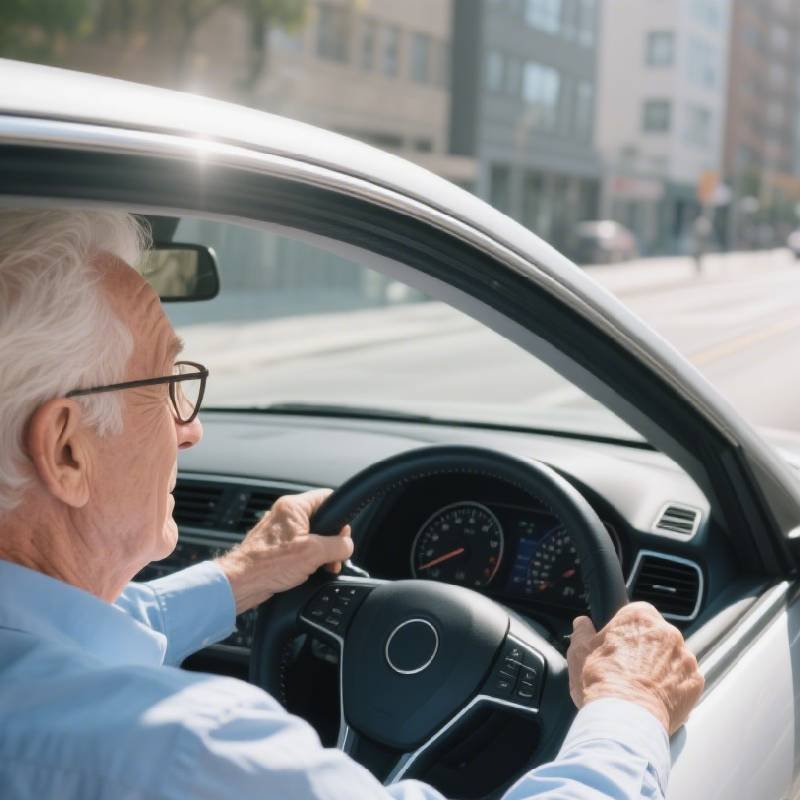Australian Drivers over 75: How to Stay Safe & Keep License
Essential guide for Australian drivers over 75: Master new medical rules & discover life-saving tech like thermal cameras for safer driving. Stay legal and secure on the road.
Introduction: New Rule Background and Reader Pain Points
Recently, Australian transport authorities introduced an important new rule. Drivers aged 75 and older must now undergo regular medical checks to keep their licenses. This rule isn’t meant to restrict older drivers. Instead, it aims to protect everyone’s safety on the road – especially as age-related vision changes can make night and bad-weather driving challenging. Fortunately, modern solutions like car thermal cameras can help overcome these visibility issues and support safer driving.
As we age, our physical abilities change. Older drivers often face more challenges while driving, with “not seeing clearly” being one of the most common concerns – exactly where assistive technology such as a car thermal camera becomes valuable.
According to the 2024 Older Driver Safety Report by the Australian Federal Department of Infrastructure, Transport, and Regional Development, there are over 1.1 million licensed drivers aged 75 and above in Australia. They make up 7.8% of all drivers.
Although this group has an 18% lower daily accident rate (per 1,000 people) compared to drivers aged 25–34, their night-time and bad-weather(rain, fog) accident rates are 27% higher..
Many older drivers share similar concerns:
When driving at night, opposing headlights make it hard to see ahead.
On rainy days, windows fog up, and traditional headlights reflect poorly, making it difficult to spot pedestrians or animals.
Reaction times are slower than in younger years, increasing risk in sudden situations.
The good news is that these visibility challenges can now be effectively addressed with professional driving assistance devices like a car thermal camera, which sees through darkness, rain, and fog, helping you see the road ahead more clearly.
This article will explain Australia’s new medical check rules for drivers over 75. It will also share practical safe driving tips and introduce car thermal camera products suitable for older drivers—so you can keep driving with peace of mind.
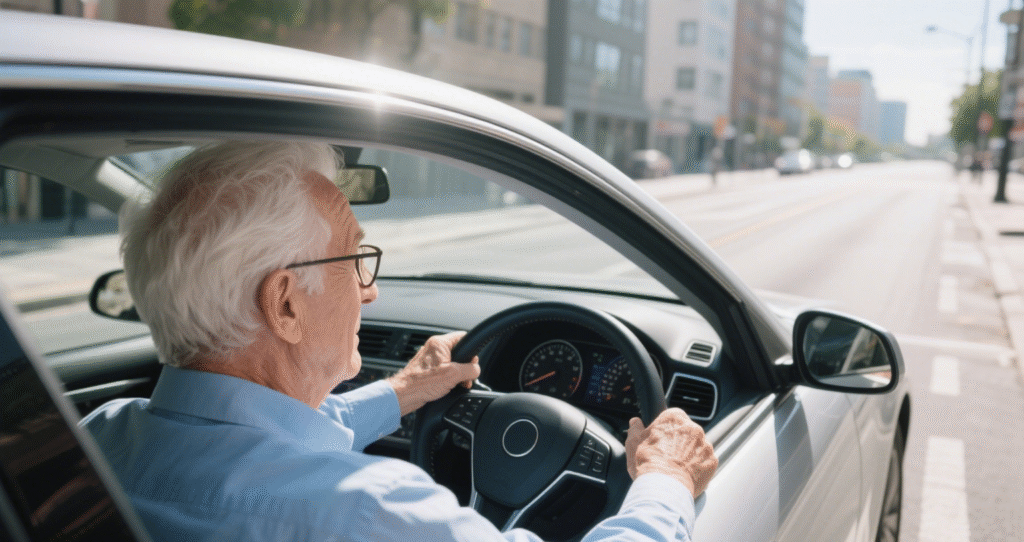
Detailed Guide to the New Rules: Medical Check Requirements and Process
To keep your license, it’s important to understand the medical check requirements and process. The following information is based on the 2024 Older Driver Assessment Guidelines from the Australian Federal Department of Infrastructure, Transport, and Regional Development (www.infrastructure.gov.au) and official state transport department rules.
1. What the Medical Check Includes
The check focuses on whether you are fit to drive safely. There are three main parts:
- Vision Test:
The doctor uses a standard eye chart. Your corrected vision (with glasses or contacts) must be at least 0.7. Your field of vision must also be normal (no significant blind spots).
If you drive with one eye, that eye must have corrected vision of 1.0, and you must pass a special field vision test.
The doctor may also briefly assess your vision in low light, which is important if you often drive at night. - Hearing Test:
No special equipment is used. The doctor will speak in a normal voice from 50 cm away in a quiet room. If you can hear and repeat what is said, you pass.
If you use a hearing aid, wear it during the test to ensure it works properly. - Cognitive Test:
This uses the Mini-Mental State Examination (MMSE). It includes remembering numbers, stating the date, doing simple math, and following instructions.
The goal is to check for serious memory loss or attention issues that could affect driving. The doctor will decide if you meet the standards.
The doctor will also ask about your health. This includes heart conditions, diabetes, epilepsy, or any medication that may cause drowsiness or dizziness. Be honest—hiding information can risk your safety.

2. Medical Check Process and Tips
The process is simple and has three steps:
- Find a Registered Doctor:
You must see a GP registered with Australian Health Practitioner Regulation Agency(AHPRA). Choose one experienced in older driver assessments. Most community clinics have such doctors—call ahead to confirm. - Complete the Check and Get Your Report:
Bring your license, medical history (e.g., records for hypertension or diabetes), and a list of medications.
After the check, the doctor will fill out a Driver Medical Assessment Form. If you pass, the report is sent to your state transport department. If not, you may need follow-up tests (e.g., new glasses for better vision). - Wait for Transport Department Approval:
The department will review your report and notify you by mail or email within 1–2 weeks.
If you pass, your license remains valid. If conditions are added (e.g., daytime driving only, must use assistive devices), these will be printed on your license.
Important Notes:
- You must pay for the check yourself (approx. AUD $100–150).
- Always be honest about your health. Hiding issues may lead to failure and increase driving risks.
3. If You Don’t Pass the Check & How to Appeal
Don’t panic—failing doesn’t always mean losing your license. Common outcomes include:
- Retest After Improvement: e.g., Get new glasses and retest.
- Conditions Added: e.g., Drive only during daytime or use a car thermal camera.
- Driving Assessment: You may need an on-road test with a certified evaluator.
If you disagree with the result, you can appeal:
- First, ask the doctor for a review.
- If still unsatisfied, submit a written appeal to your state transport department with supporting documents from another doctor. They will review within 30 days.
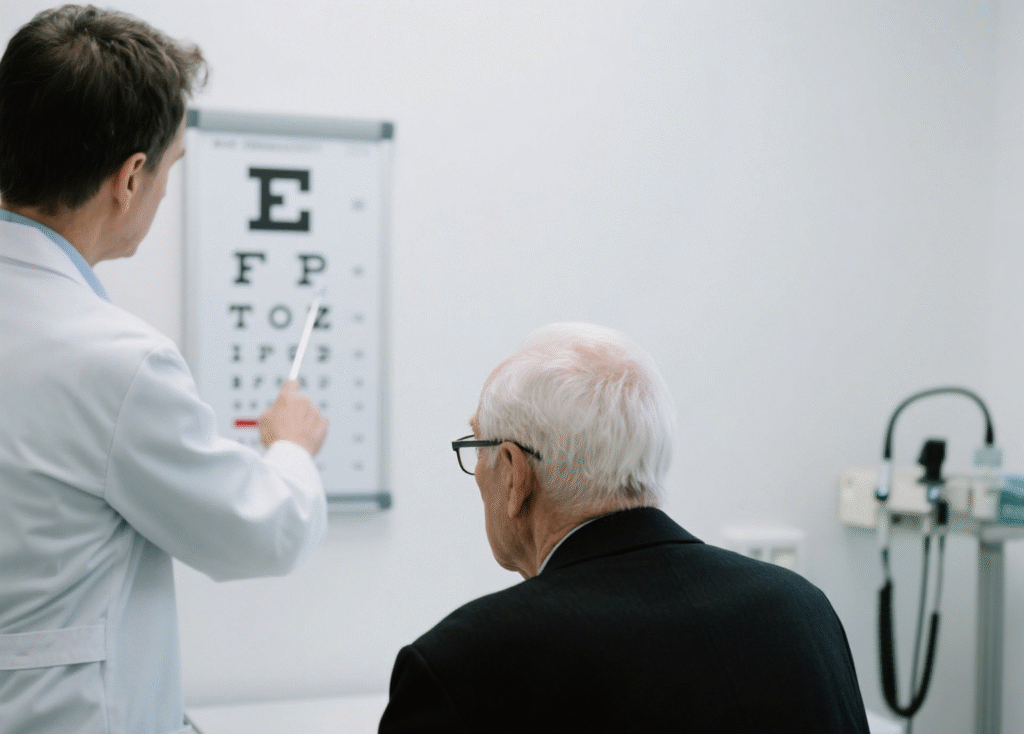
Common Challenges for Older Drivers & Practical Solutions
Now let’s discuss three common challenges: vision issues, slower reaction times, and cognitive changes. Each has solutions.
1. Vision Issues: Trouble Seeing at Night or in Bad Weather
- Common Problems:
Age-related eye conditions like cataracts or glaucoma can cause:- Difficulty driving at night due to low light and glare from headlights.
- Reduced visibility in rain, fog, or snow.
- Conventional solution:
- Get regular eye checks every six months.
- Avoid driving at night (after 7 PM) or in bad weather.
- Use anti-glare window film and keep windows clean.
- Ensure headlights and fog lights are working properly.
However, these methods only help avoid problems—they don’t solve them. For essential night-time or bad-weather driving, a car thermal camera is a better solution. It sees through darkness and poor weather, giving you a clear view.
2. Slower Reaction Times: Difficulty Responding Quickly
- The Issue:
Research from the Australian Road Safety Agency (2023) shows that drivers under 50 have an average reaction time of 0.7 seconds. For those over 75, it’s 1.2 seconds.
At 60 km/h, this 0.5-second delay means over 8 meters of extra stopping distance—enough to avoid or cause an accident. - Solutions:
- Practice defensive driving: Keep a 3-second gap from the vehicle ahead.
- Avoid peak traffic hours (7–9 AM, 5–7 PM).
- Stay active with walking or light exercise to maintain coordination.
3. Cognitive Changes: Forgetting Routes or Hesitating at Complex Intersections
- Impact on Driving:
Mild cognitive changes can make it hard to remember new routes or navigate complex junctions. Hesitation can lead to mistakes under pressure. - Solutions:
- Use voice-guided GPS navigation.
- Familiarize yourself with routes before driving.
- Participate in cognitive training activities (e.g., puzzles, memory games).
Tech-Assisted Driving: Innovative Solutions for Older Drivers
While conventional methods help, technology offers better solutions for low-visibility conditions. Car thermal cameras are particularly effective.
1. Common Assistive Technologies
- Blind spot detection systems
- Lane departure warnings
- Rear-view cameras
- Car thermal cameras: See through darkness, rain, and fog without relying on light.
2. Robofinity InsightDrive: A Car Thermal Camera for Older Drivers
Based on our research, Robofinity InsightDrive is one of the most suitable car thermal cameras for older drivers. Here’s why:
- Sees Through Darkness and Bad Weather:
Unlike traditional headlights, it uses thermal imaging to detect heat signatures. It works in complete darkness, heavy rain, fog, or snow.
It can detect pedestrians, animals, or vehicles up to 656 feet (200 meters) away—3x farther than standard headlights. - AI-Powered Alerts:
Trained on 200,000+ images, it identifies objects with 95% accuracy.
It uses color-coded alerts (red for people, yellow for vehicles, green for animals) and gentle sounds to avoid startling the driver. - Easy 5-Minute Installation:
No professional help needed. Just attach the camera to the grille and the screen to the dashboard. Plug into the cigarette lighter—done. - Low Power Consumption & Automatic Operation:
Uses only ≤5W of power—less than phone charging.
Turns on/off with your car—no manual operation needed.
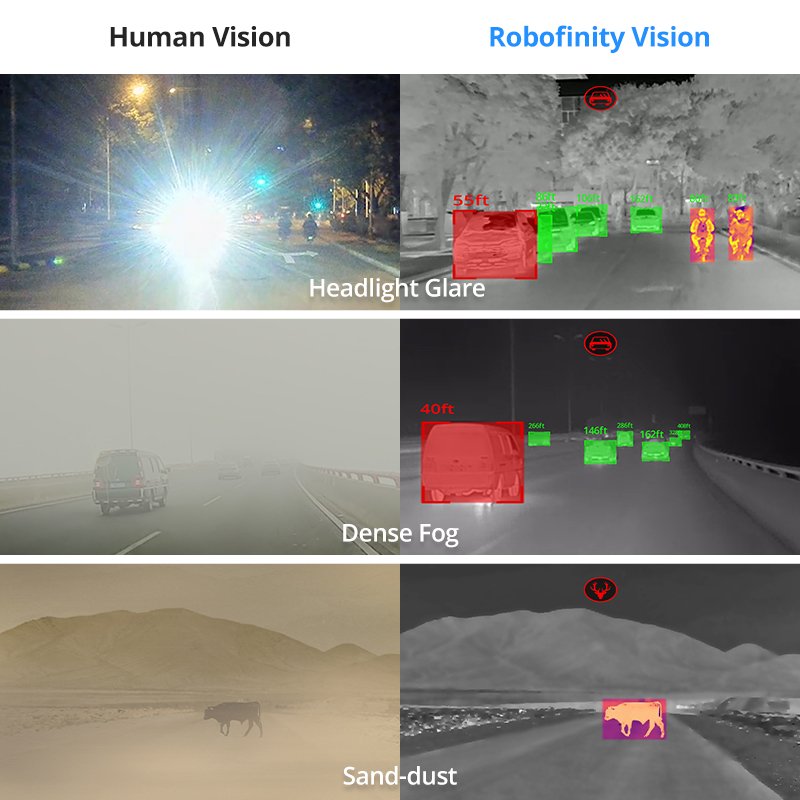
How to Choose the Right Car Thermal Camera
For older drivers, ease of use, easy installation, and good value are key.
4 Key Factors When Choosing a Car Thermal Camera
- Ease of Use: Large screen (5+ inches), simple controls, clear displays.
- Easy Installation: No wiring or drilling—plug-and-play only.
- Low Power Usage: Shouldn’t drain the car battery.
- Reasonable Price: Aim for USD $500–800 for good quality without extra features.
Why Robofinity InsightDrive Fits Older Drivers’ Needs
- 6.25-inch touchscreen with high resolution (1560×720)
- Simple three-button control
- Easy DIY installation
- Low power (≤5W) and automatic operation
- Priced at approximately $790 AUD—affordable with reliable performance
- Supports over-the-air (OTA) updates for future improvements
Practical Tips: Safe Driving Guide for Older Drivers
Good habits + good tech = safer driving.
Before Driving: 3 Checks
- Check tires, brakes, and lights.
- Ensure assistive devices (e.g., InsightDrive) are working.
- Make sure you feel well and aren’t drowsy.
While Driving: 3 Slow Rules
- Start slowly after red lights.
- Slow down before turns.
- React calmly to alerts—brake gently.
In Special Conditions: Rely on Tech
- At night, use the thermal camera screen instead of high-beams.
- In rain or fog, trust the thermal display over visible light.
Daily Habits: 3 Avoidances
- No distractions (phones or adjusting devices while driving).
- Don’t drive tired—take breaks every hour.
- Avoid long trips alone—bring a companion.
Regular Maintenance: 2 Routines
- Monthly: Clean camera lens, check cables.
- Every 6 months: Professional car service.
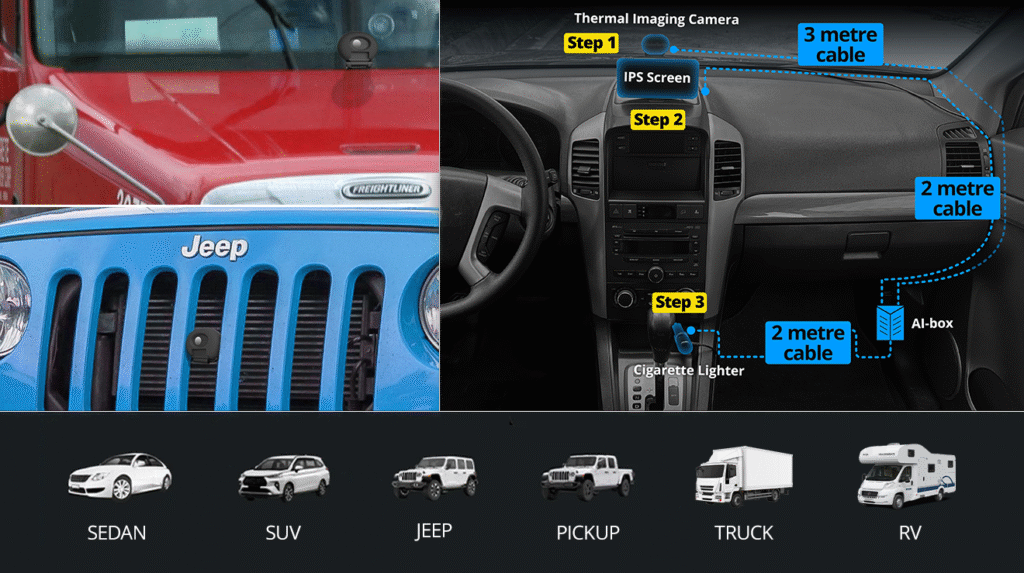
User Feedback: How Car Thermal Cameras Help Older Drivers
According to user reviews, many older drivers in Australia experienced improved confidence with InsightDrive:
- A user in Queensland: “I used to avoid driving at night due to kangaroos. Now I see them early enough to slow down.”
- A Sydney driver: “Even in heavy rain, the thermal camera shows other cars clearly. I feel much safer.”
Users also appreciated the easy installation and simple operation.
FAQ (Frequently Asked Questions)
Q1: How often must drivers over 75 undergo medical checks?
A: It varies by state. Most require checks every 1–2 years. For example, in NSW and VIC, drivers aged 75–84 require checks every 2 years; 85+ every year.
Q2: Can I keep my license if I fail the medical?
A: Yes. You may receive conditions (e.g., daytime driving only) or be asked to retest. Appeals are possible.
Q3: What tech products can help older drivers?
A: Car thermal cameras (e.g., InsightDrive), blind-spot monitors, rearview cameras, and voice navigation.
Q4: How do I install Robofinity InsightDrive?
A: It takes 5 minutes: attach the camera to the grille, mount the screen, Plug into the car’s 12V power outlet—done..
Q5: Is InsightDrive worth the price?
A: Based on our testing, yes. It significantly improves safety in low-visibility conditions and helps maintain independence.
Q6: Is InsightDrive supported in Australia?
A: Yes. It works with 12V car outlets and comes with 1-year warranty and local customer support.
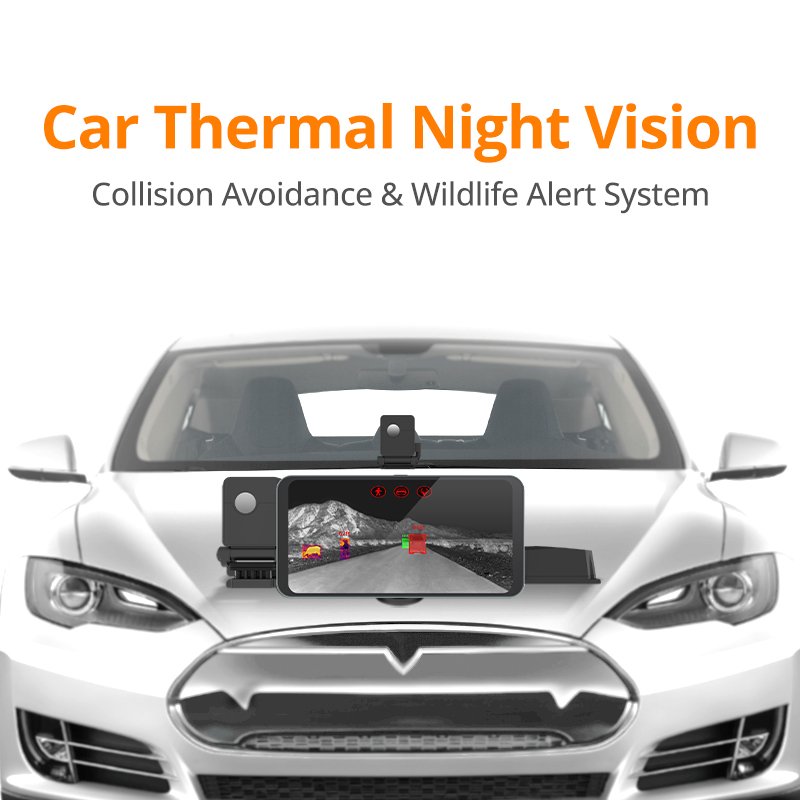
Conclusion: Safe Driving Has No Age Limit
Australia’s new medical rules aim to keep everyone safe—not to stop older people from driving. With regular check-ups, smart habits, and technology like car thermal cameras, older drivers can continue to drive safely and independently.
Robofinity InsightDrive is an excellent choice for older drivers. It offers clear visibility in all conditions, easy operation, and reliable performance at a reasonable price. It’s more than a device—it’s a safety partner that helps you enjoy the freedom of driving with confidence.
If you often drive at night or in bad weather, consider a car thermal camera like InsightDrive. It could make your drives safer and give your family peace of mind.
We hope this guide helps you. Stay safe on the road!

